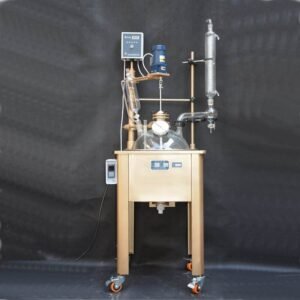
Low-temperature cooling circulating pumps are essential for providing stable cooling in various laboratory and industrial settings, including chemical reactions, distillation, and material testing. Proper usage of these devices is vital for their performance and longevity. Below is a comprehensive summary of key precautions to keep in mind when using low-temperature cooling circulating pumps:
1. Ensure Proper Installation
- Stable Placement: Place the pump on a level and stable surface to prevent vibrations during operation. Ensure that it is positioned in a dry and ventilated area, away from sources of heat or direct sunlight.
- Correct Connections: Properly connect the inlet and outlet pipes to prevent leaks or pressure loss. Ensure all pipe connections are secure and use appropriate sealing materials, such as Teflon tape, to avoid leaks.
2. Select the Appropriate Cooling Medium
- Use Compatible Fluids: Always use the specified cooling fluids (e.g., ethanol, glycol mixtures, or water-based coolants) as recommended by the manufacturer. Avoid using corrosive liquids that could damage the internal components of the pump.
- Monitor Fluid Levels: Regularly check the fluid reservoir to ensure it is adequately filled. Operating with insufficient coolant can cause the pump to overheat or malfunction.
3. Temperature Settings
- Set Appropriate Temperature Ranges: Ensure that the temperature settings are within the operational limits of both the circulating pump and the cooling medium. Setting temperatures too low can result in freezing, while excessively high temperatures can lead to reduced cooling efficiency.
- Avoid Extreme Temperature Shifts: Gradually change temperature settings to avoid thermal shock to the system, which could damage the cooling pump or affect fluid stability.
4. Prevent Fluid Contamination
- Regularly Replace Coolant: Change the cooling fluid periodically to avoid contamination or degradation. Contaminated coolant can clog the system, reducing performance and leading to potential breakdowns.
- Use Clean Fluids: Ensure that the cooling medium is clean and free from particulate matter, which could cause blockages in the circulation lines or damage the pump.
5. Monitor and Maintain System Pressure
- Check Pressure Regularly: Ensure the pump operates within the recommended pressure range. Overpressure can cause leaks or damage the pump, while underpressure may lead to inefficient cooling.
- Use Pressure Relief Valves: Install pressure relief valves if required, to safeguard the system from excess pressure build-up.
6. Maintain Pump Seals and Components
- Check Seals for Wear: Periodically inspect the seals, especially around the pump shaft, to ensure they are intact and not leaking. Replace any worn or damaged seals promptly to avoid fluid loss and system inefficiency.
- Lubricate Moving Parts: Some pumps may require occasional lubrication of moving parts. Check the manufacturer’s maintenance manual and follow recommended lubrication procedures to prevent wear and tear.
7. Prevent Overloading
- Avoid Overloading the Pump: Ensure the pump is not overloaded by monitoring its capacity and ensuring that it is not overworked by connecting too many devices simultaneously.
- Monitor Power Supply: Use a stable power supply to prevent electrical surges or drops, which could damage the pump motor.
8. Regular Cleaning of the System
- Clean Heat Exchangers and Coils: Regularly clean heat exchangers, condensers, and any other cooling coils to remove dust, dirt, or scale buildup, which can hinder efficiency.
By adhering to these key precautions, users can enhance the performance and longevity of low-temperature cooling circulating pumps, ensuring reliable operation in various applications.



